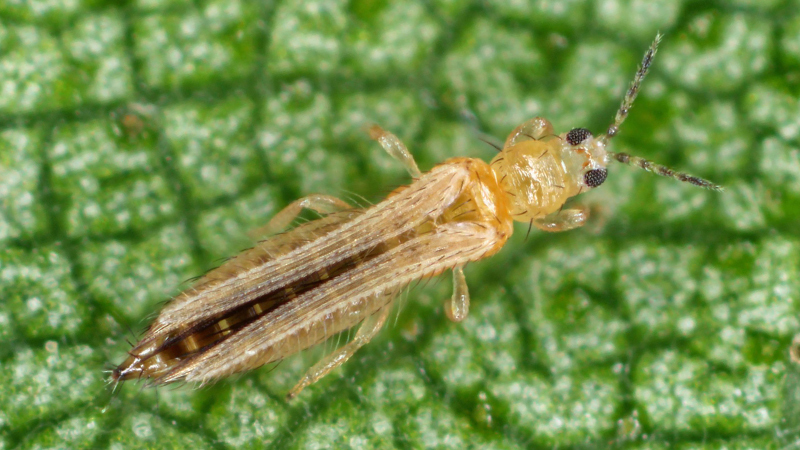8 Factors Shaping the Future of Cannabis Production

The ability to rapidly increase biomass in the form of durable fibers makes cannabis an ideal crop for carbon sequestration. Photo: Greenhouse Grower
Cannabis cultivators have witnessed major developments in a few short years. The rapid evolution of academic research, government regulation, and production scale have provided generational opportunities, while complicating the path to profitability for many producers. The cost-effective cultivation of protected crops requires long-term investments in infrastructure, research, and personnel. For cannabis producers, this investment entails millions of dollars in outlay and several years for large-scale project development.
The design development phase of complex projects should include an analysis of industry trends prior to the deployment of capital. While details of the future are inscrutable, we should be able to anticipate the direction of our industry based on an understanding of the history and physiology of this crop, as informed by current trends in horticulture technology.
An Emergent Industry
Cannabis has rapidly emerged from clandestine cultivation in basements to become a $60 billion industry that rivals corn as North America’s most valuable crop. This transition, however, has not been smooth. The de-scheduling of CBD in the 2018 Farm Bill resulted in a green rush of farmers nationwide planting hemp crops for the first time in a hundred years. The resulting glut and price crash may seem inevitable now, but many farmers suffered avoidable financial hardship due to an inability to accurately forecast market demands.
A Global Crop
The international growth in production of this crop seems likely to continue. In addition to well-established applications for food, fiber, medical, and psychoactive use, cannabis plants exhibit other traits of value in a warming and polluted world.
The ability to rapidly increase biomass in the form of durable fibers makes cannabis an ideal crop for carbon sequestration. Use of these fibers in construction materials including insulation and hempcrete enables long-term carbon storage. Cannabis is an efficient bioaccumulator of heavy metals and has demonstrated utility in remediation of polluted industrial sites. The value proposition for these applications will vary by jurisdiction as influenced by carbon taxation and environmental remediation policies.
As cannabis becomes more normalized for international and interstate trade, cultivation will be increasingly concentrated in those geographies with labor and climate conditions most suitable to efficient production. This versatile crop will be cultivated in diverse circumstances based on the materials end use.
Fiber and Food
The production of cannabis for fiber and nutritional products is well established and quickly expanding in North America. Until recently, most hemp production for this purpose has occurred in China, where near-term dominance of fiber market share is assumed due to proximity to processing infrastructure. Many cultivars that have been selected for fiber or oil production are monoecious and produce seeds as well as copious anemophilic (wind-dispersed) pollen. Cultivation of these crops can result in pollen dispersal at a geographic scale, posing a threat to production of cannabinoid and flower crops.
Cannabinoid Crops
Cannabinoids are bioactive compounds produced by cannabis plants with medical and psychoactive properties. Crops that are cultivated for biomass cannabinoid extraction can be considered as commodity crops and have requirements that are distinct from smokeable flower crops. Agricultural production of cannabinoid crops is likely to resemble production of other large-scale commodities, with all agronomic processes highly automated.
Seed-based propagation demands will drive development of feminized, triploid, day-neutral cultivars that are pest and pollination resistant, enabling continual combine harvesting throughout the growing season. Crop assessment will be optimized with drone-mounted cameras, artificial intelligence (AI)-assisted nutrient and crop health diagnostics, and treatment with targeted biopesticide applications.
Precision Fermentation
Precision fermentation (PF) refers to the use of genetically engineered microorganisms to synthesize target compounds in industrial vats. This metabolic process has supplanted agriculture as a source of various isolate compounds for industrial use. There are multiple well-funded entities currently researching production of cannabinoids through PF. At the time of writing, cannabigerolic acid (CBGA) has been synthesized using this approach.
CBGA can be considered as a precursor cannabinoid. Within the cannabis plant, CBGA is converted to CBDA, THCA, and other compounds through biosynthesis within trichome heads. Secondary metabolic steps will likewise be required to produce other valuable cannabinoids from CBGA feedstock within PF systems.
Smokeable Flower
Cannabis cultivators who are focused on the smokeable flower market will face increasing competitive pressure to produce premium-quality products as declining price points make this consumer packaged good segment more affordable. This segment of the industry closely parallels the wine industry as a psychoactive botanical product with complex organoleptic characteristics. These characteristics provide the opportunity for luxury product differentiation, with attendant profit margins.
Sinsemilla (seedless) crop production will increasingly require positive air pressurization and advanced filtration systems to mitigate against pollen contamination within controlled-environment agriculture systems. Greenhouse cultivators will have distinct price advantages over indoor production when environmental parameters can be controlled, due to the sunlight resource, as has been demonstrated with other crops.
Digital Crop Monitoring
Dense digital data collection systems have the potential to augment crop decision making based on observations not evident to the grower. Cameras can detect changes in leaf hue, signaling nutrient uptake, or photosynthetic deficits before they can be discerned by the human eye. Sensor arrays of increasing sophistication provide real-time climate modeling of implied airflow and enhance the ability of cultivators to size and locate climate equipment. Continued advancement in imaging and AI systems will enable cultivators to manage large canopies more efficiently.
Pest Evolution
Pests will continue to evolve abilities to compromise this monocrop as the scale of production increases, and to evolve resistance to many conventional control measures. Cultivators and researchers will meet these emergent challenges with continued development of biological predators, biopesticides, and the ingression of inherited resistance traits into commercial cultivars.
Greenhouse operators should be prudent when allocating infrastructure expenditures. It can be challenging to formulate long-term projections in this mercurial industry, but doing so might just save your farm.










